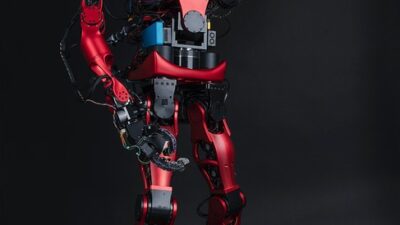In the ever-evolving landscape of technology, few advancements have sparked as much excitement and transformation as machine learning (ML). This branch of artificial intelligence not only mimics human cognitive functions but also processes vast amounts of data to unearth trends, improve efficiencies, and drive innovation across various sectors. As we delve into the transformative power of machine learning, it becomes evident that its impact is profound and far-reaching.
Understanding Machine Learning
At its core, machine learning refers to the capacity of algorithms to learn from data, identify patterns, and make decisions with minimal human intervention. This self-improving nature makes ML tools exceedingly powerful. With advancements in computational power and the availability of vast datasets, machine learning systems can enhance their performance over time, paving the way for a wide array of applications.
Revolutionizing Healthcare
One of the most promising applications of machine learning is in healthcare. Algorithms can analyze medical imaging, predict disease outbreaks, and even assist in diagnosing ailments with unparalleled accuracy. For instance, ML models are being utilized to interpret radiology scans, identifying conditions such as tumors or fractures faster and sometimes more accurately than human radiologists. Furthermore, predictive analytics, powered by machine learning, can forecast patient admissions and optimize treatment plans, ultimately improving patient outcomes and reducing costs.
Enhancing Financial Services
The financial industry has also embraced machine learning, transforming operations from risk assessment to fraud detection. Algorithms analyze transaction patterns, spot anomalies in real-time, and flag potential fraudulent activities before they escalate. Moreover, robo-advisors, powered by machine learning, provide personalized investment advice to clients by utilizing massive data sets that consider market trends and individual investor behavior. This democratization of investment insights fosters greater financial inclusion.
Revolutionizing Retail and E-Commerce
In retail, machine learning is reshaping customer experiences and optimizing supply chains. Businesses use ML algorithms to analyze consumer data, predicting shopping trends and personalizing recommendations. This data-driven approach enhances customer satisfaction by ensuring that users are presented with products that meet their specific needs. Additionally, inventory management systems leverage ML to predict demand, reducing warehousing costs and minimizing stockouts.
Innovating Manufacturing
Manufacturers are also capitalizing on machine learning to streamline operations and enhance quality control. Predictive maintenance techniques utilize data from machinery to foresee potential failures, enabling timely repairs and minimizing downtime. By leveraging machine learning, companies can optimize production processes, reducing waste and boosting efficiency.
Transforming Transportation
The transportation sector is on the brink of a revolution thanks to machine learning. Autonomous vehicles represent the pinnacle of this transformation, relying on ML algorithms to navigate roads, recognize obstacles, and predict traffic patterns. Moreover, logistics companies utilize machine learning to optimize routes, improving delivery speeds while reducing fuel consumption and operational costs.
Envisioning Neural Networks in Cybersecurity
Machine learning is becoming increasingly vital in cybersecurity, where it helps detect and mitigate ever-evolving threats. By analyzing network traffic and user behavior, ML algorithms identify unusual patterns indicative of cyber-attacks, enabling quicker responses and more robust security measures. This proactive approach is critical in an age where data breaches and cyber threats are omnipresent.
Challenges and Considerations
Despite its potential, the integration of machine learning across industries is not without challenges. Data privacy concerns, algorithmic bias, and the need for substantial computational resources are significant hurdles that must be navigated. Ensuring ethical AI practices, developing transparent algorithms, and fostering collaboration between humans and machines will be essential in harnessing machine learning’s full potential.
Conclusion
Machine learning is not just a technological advancement; it represents a paradigm shift that is unlocking new possibilities across various sectors. From healthcare to finance, and retail to transportation, industries are leveraging ML to drive efficiency, enhance decision-making, and improve customer experiences. By overcoming challenges and embracing a future where humans and machines can work in harmony, we can fully realize the transformative power of machine learning, ushering in an era of unprecedented innovation and growth. The journey has only just begun, and the future promises to be as exciting as it is unpredictable.



